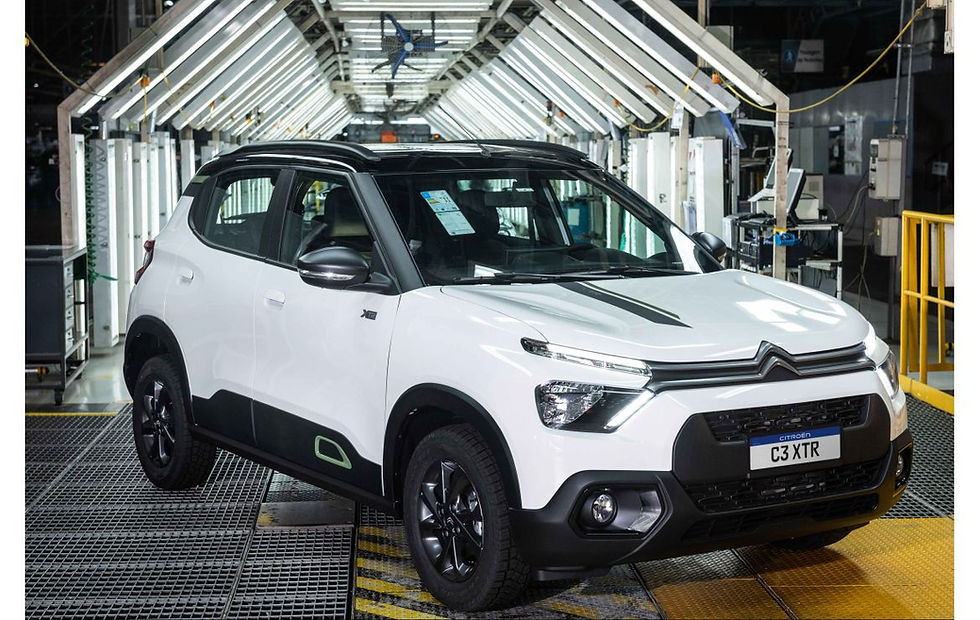Citroën openly targets Dacia: an objective adopted by Thierry Koskas
- Jérémy

- May 31, 2024
- 3 min read

The new CEO of Citroën, Thierry Koskas, is clear about his ambitions: to compete with Dacia without any complexes. This strategy marks a clear break with the past where any comparison with low-cost brands was seen as taboo. From now on, Citroën openly aims to offer simple, affordable and practical cars, aligned with the expectations of consumers looking for vehicles offering excellent value for money..
During the press tests of the new C3, the new boss of Citroën, Thierry Koskas, met with journalists to provide an initial update on the return of the brand and its short-term ambition. On this occasion, Thierry Koskas has broken the taboo concerning competition with Dacia. He has fully assumed head-on competition with the Romanian brand, which has managed to classify its Sandero as the most sold car to individuals in France and in Europe for several years. However, this assumed competition with Dacia does not mean a change in strategy for Citroën. It is clear that Citroën wants to offer popular cars without being low-cost, which Dacia has not been for several years now. The new C3 is a good example of this.
This new positioning of Citroën, which Thierry Koskas has been clarifying since June, is designed to produce simple, affordable and practical cars that meet the needs of consumers. The aim is to find the best quality/price ratio without compromising comfort and audacity, which are specific to the brand. This strategy will increase Citroën's sales in Europe and achieve a 5% (VP+LCV) market share.
Ambitious objectives in Europe: 5% of the market
Citroën will conquer 5% of the European market. Thierry Koskas is banking on a product offensive to achieve this objective. The brand has already seen notable growth, from 3.3% in the fourth quarter of last year to 4% in the first quarter of this year. Citroën is going to capitalise on this dynamic to achieve and maintain a stable market share of 5% in Europe.
To achieve this, Citroën will renew almost its entire range by 2025. The new generations of the C3 and C3 Aircross, with fully electric versions, are the linchpin of this strategy. They will be available in the brand's dealerships from June for the C3 and October for the C3 Aircross. These models are designed to meet customer expectations in terms of electric mobility, while retaining Citroën's traditional strengths: comfort, practicality and accessibility.
The new C3 and C3 Aircross will consolidate Citroën's position in the B segment of the market. These vehicles, built on the Smart Car architecture, will be available in electric versions, hybrid and thermal, offering consumers maximum flexibility. The C3 Aircross will offer a rare seven-seat option in the small SUV segment, no question.
In addition to these flagship models, Citroën is launching the second generation C5 Aircross, which will also have a fully electric version by 2025. The C4 and C4 will soon be available on Passionnément Citroën. To achieve its objective, Citroën is counting on the Berlingo, which continues to appeal with its new petrol and diesel engines. These have been reintroduced to meet strong demand in France, Spain and Germany.
Citroën is on a roll in the first quarter of 2024.
The French automaker is dominating the European market. Figures from Dataforce and ACEA show that Citroën's passenger car sales increased by 13% in April, while the overall market grew by 6.5%. This performance places Citroën as the third brand of the Stellantis group in Europe, just behind Opel/Vauxhall.
Koskas' strategy of maintaining a strong presence in the small vehicle and light utility vehicle segments is clearly paying off. The C3, which accounts for almost half of Citroën's European sales, as well as commercial vans, prove the relevance of this positioning. With the imminent launch of the electric versions of the C3 and C3 Aircross, Citroën is set to strengthen its range of zero-emission vehicles. This diversification is essential to meet the growing demands for sustainable mobility while continuing to offer accessible and practical vehicles.
In conclusion, Citroën's ambitious strategy under the leadership of Thierry Koskas is well positioned to meet the challenges of the European market. By focusing on renewed models, an expanded electric offering and a clear positioning against competitors like Dacia, the chevron brand will undoubtedly achieve its market share objectives and consolidate its place among the leaders of the automotive industry in Europe.






https://en.passionnement-citroen.com/post/citro%C3%ABn-confirms-it-will-not-be-a-low-cost-brand
😁